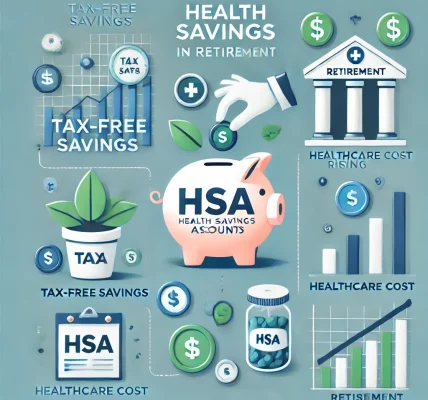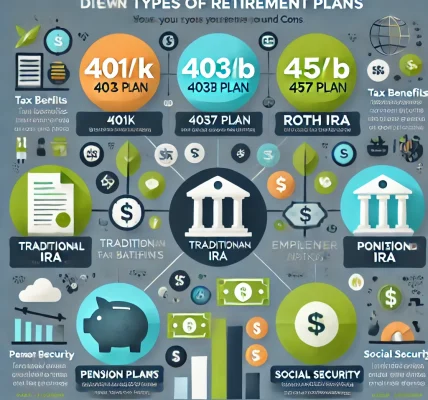Introduction
Retirement planning is an essential financial decision that ensures financial stability and independence in old age. In India, individuals can choose between government-backed and private retirement plans. While government schemes offer security and stability, private plans often provide higher returns and flexibility. However, choosing between the two requires careful consideration of various factors like risk appetite, financial goals, and long-term benefits.
This blog will explore the pros and cons of government and private retirement plans to help you make an informed decision that best suits your needs.
Understanding Government and Private Retirement Plans
What are Government Retirement Plans?
Government-backed retirement plans are regulated by the government and typically offer guaranteed returns with lower risks. These include:
- Employee Provident Fund (EPF)
- Public Provident Fund (PPF)
- National Pension System (NPS)
- Atal Pension Yojana (APY)
- Senior Citizens Savings Scheme (SCSS)
What are Private Retirement Plans?
Private retirement plans are offered by private financial institutions, insurance companies, and mutual fund houses. These include:
- Unit Linked Insurance Plans (ULIPs)
- Mutual Fund Retirement Plans
- Fixed Deposits for Retirement
- Annuity Plans by Private Insurers
- Portfolio Management Services (PMS)
Pros and Cons of Government Retirement Plans
Pros:
✅ Safety and Stability – Backed by the government, these plans have low risk and guaranteed returns.
✅ Regulated by Authorities – Managed by bodies like EPFO and PFRDA, ensuring transparency.
✅ Tax Benefits – Most government schemes offer tax deductions under Section 80C and 80CCD.
✅ Inflation Protection – Some schemes adjust returns based on inflation trends (e.g., SCSS interest rates).
✅ Guaranteed Pension – Plans like Atal Pension Yojana (APY) and NPS provide assured monthly pension post-retirement.
Cons:
❌ Lower Returns – Government schemes usually provide lower returns compared to private investments.
❌ Limited Flexibility – Premature withdrawals are restricted in most schemes (e.g., PPF has a 15-year lock-in).
❌ Capped Investment Limit – Some schemes have a maximum investment limit (e.g., SCSS allows up to ₹30 lakh only).
❌ Not Always Sufficient for Retirement – May require additional investments to maintain a desired lifestyle post-retirement.
Pros and Cons of Private Retirement Plans
Pros:
✅ Higher Returns – Market-linked investments in mutual funds, ULIPs, and annuity plans often outperform government schemes.
✅ Flexibility in Investment – Options to invest in equity, debt, or hybrid funds based on risk appetite.
✅ Liquidity – Many private plans allow partial withdrawals, unlike government schemes.
✅ Customization – Private retirement plans offer tailored solutions based on financial goals and lifestyle needs.
Cons:
❌ Market Risks – Returns are not guaranteed as they depend on market performance.
❌ Higher Costs – ULIPs and other private pension schemes have fund management charges.
❌ No Government Guarantee – Unlike government-backed schemes, private plans do not have sovereign backing.
❌ Complexity – Requires proper financial planning and monitoring to ensure good returns.
Government vs. Private Retirement Plans: A Comparative Table
| Feature | Government Plans | Private Plans |
|---|---|---|
| Safety & Security | High (Government-backed) | Moderate to High (Depends on plan) |
| Returns | Low to Moderate | Moderate to High (Market-linked) |
| Tax Benefits | Yes (Under Sections 80C, 80CCD) | Yes (ULIPs, Mutual Funds offer tax benefits) |
| Investment Flexibility | Limited | High |
| Liquidity | Low (Long lock-in periods) | High (More withdrawal options) |
| Market Risk | None to Minimal | Moderate to High |
| Pension Guarantee | Yes (NPS, APY) | No guaranteed pension |
Which One Should You Choose?
Choose Government Retirement Plans If:
✔️ You prefer low-risk investments. ✔️ You seek stable and guaranteed returns. ✔️ You want tax-saving benefits with long-term security. ✔️ You are looking for a government-backed pension.
Choose Private Retirement Plans If:
✔️ You are willing to take moderate to high risk for better returns. ✔️ You want more flexibility in investments and withdrawals. ✔️ You are looking for customized retirement planning solutions. ✔️ You want to invest in market-linked schemes for wealth creation.
Best Strategy: Combining Both for a Balanced Approach
A smart retirement strategy involves a combination of government and private plans to balance security and higher returns. Here’s how:
🔹 Invest in EPF/PPF for stability – These offer long-term security and tax benefits. 🔹 Use NPS for additional retirement income – Offers a mix of fixed income and equity exposure. 🔹 Allocate funds to mutual funds or ULIPs – Helps in wealth accumulation over the long term. 🔹 Consider SCSS or fixed deposits post-retirement – Ensures regular income for retirees.
Conclusion
Both government and private retirement plans have their unique advantages and disadvantages. Government schemes provide security and guaranteed returns, while private plans offer flexibility and higher growth potential. Choosing the best retirement plan depends on your income, financial goals, risk tolerance, and retirement needs.
The best approach is to diversify investments across both types of plans to enjoy financial stability and wealth growth in retirement. Start planning today to secure your golden years with a well-structured retirement portfolio.




